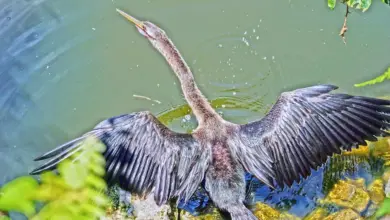The Atitlán Grebes (Podilymbus gigas) – also known as Giant Grebe, Giant Pied-billed Grebe, or Poc – is an extinct relative of the Pied-billed Grebe.
Distribution / Range
It was endemic at the Lago de Atitlán in Guatemala in an altitude of 1700 m asl.
Description
The Atitlán Grebes reached a length of about 46 – 50 cm. The call and the look were similar to the Pied-billed Grebe.
The plumage was mainly dark brown with white flecked flanks. The underparts were dark grey flecked with white.
The Atitlán Grebes head was almost black and the neck was flecked with dark brown in the spring and white in the winter. The legs were slaty grey.
The bold bill had a black vertical band in the middle. The color of the bill varied from white in the spring to brown in other seasons. The iris were brown. It had small wings and was flightless.
Breeding / Nesting
The nest consisted of 4 to 5 white eggs. Both parents have shared the rearing of the hatchlings.
Extinction
The decline of the Atitlan Grebes began in 1958 and in 1960 after Smallmouth bass (Micropterus dolomieu) and Largemouth bass (Micropterus salmoides) were introduced into the Lake Atitlan, which reduced the crab and fish populations the Atitlan Grebe fed on.
Further more, these fish preyed on the grebe’s young.
The final blow to its existence was caused by the earthquake in Guatemala in 1976 as the lake bed became fractured. An undersea drain lead to the falling of the water level.
The last two birds were seen in 1989 and after they have disappeared the Atitlan Grebe was declared officially extinct.





